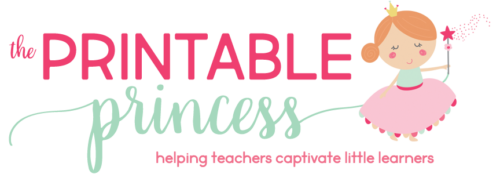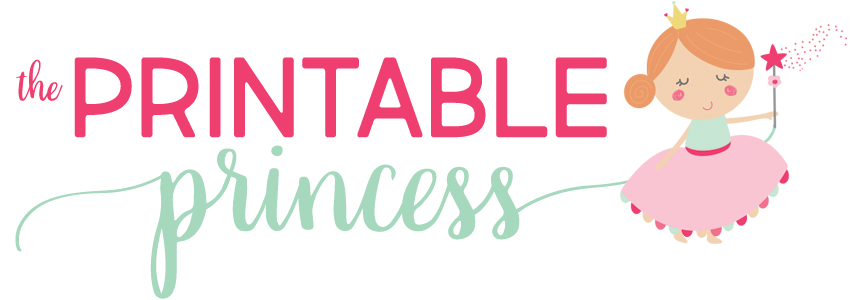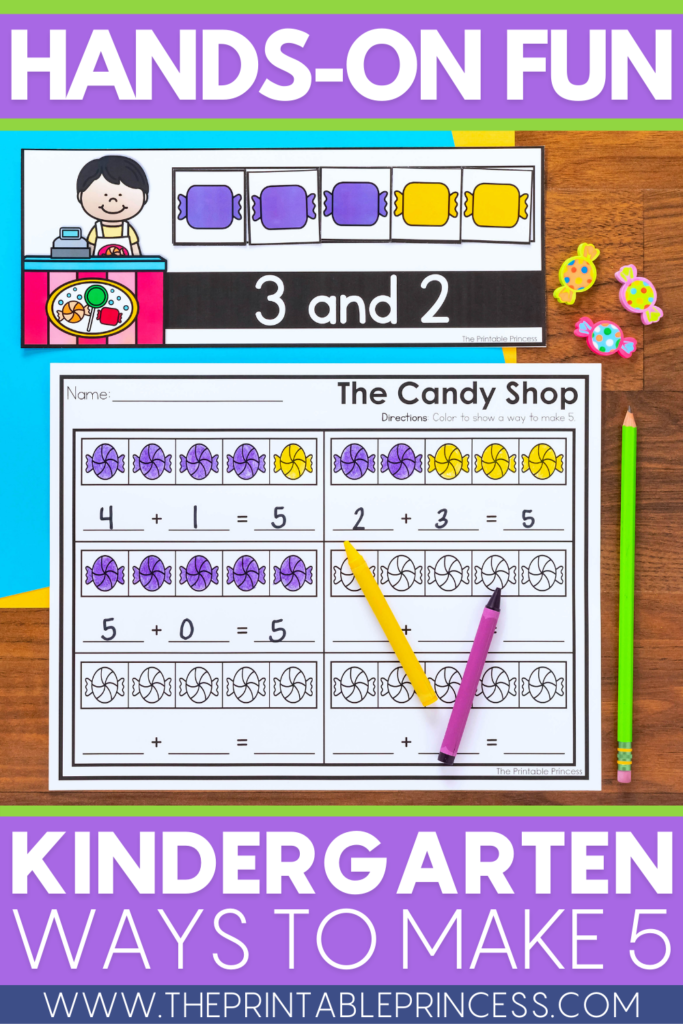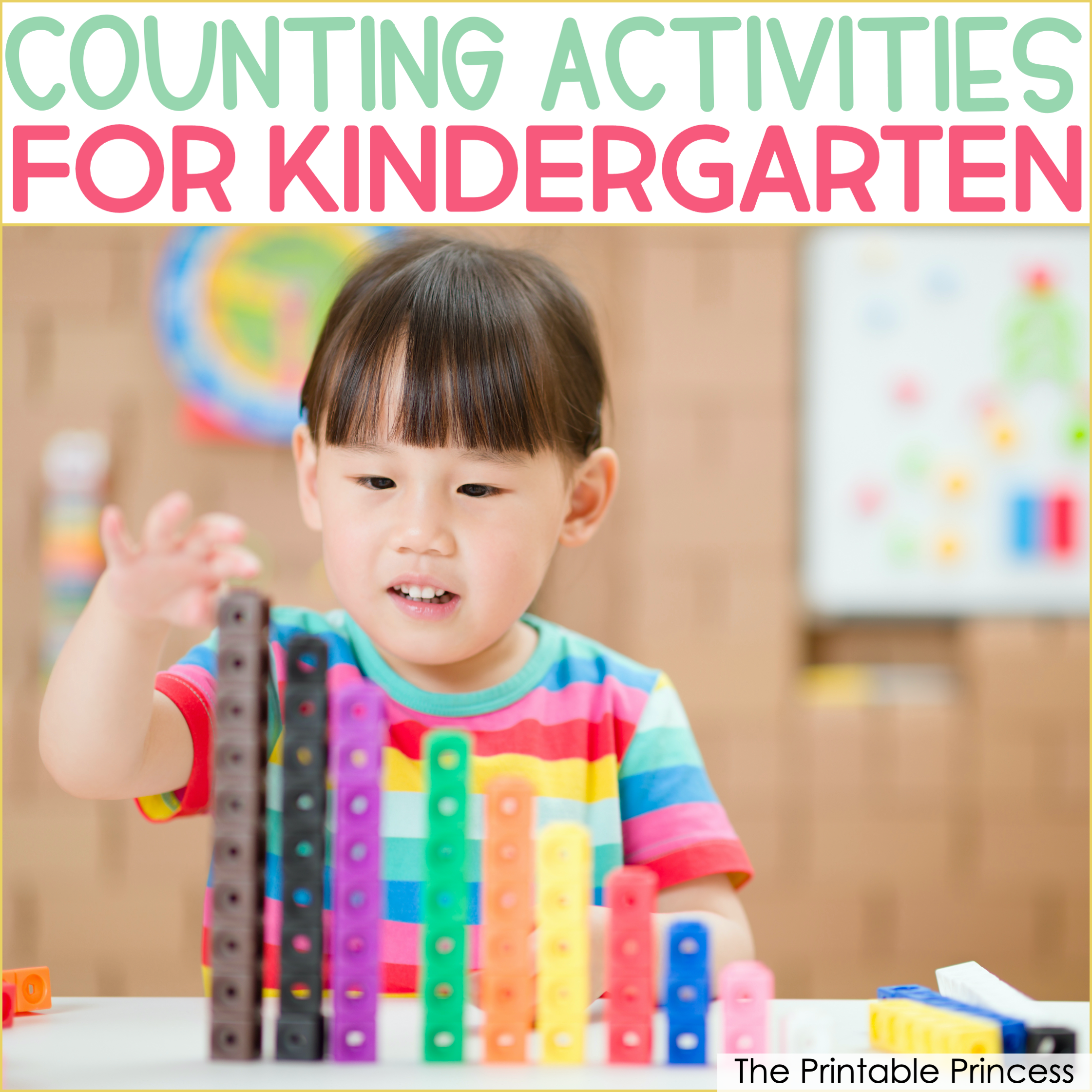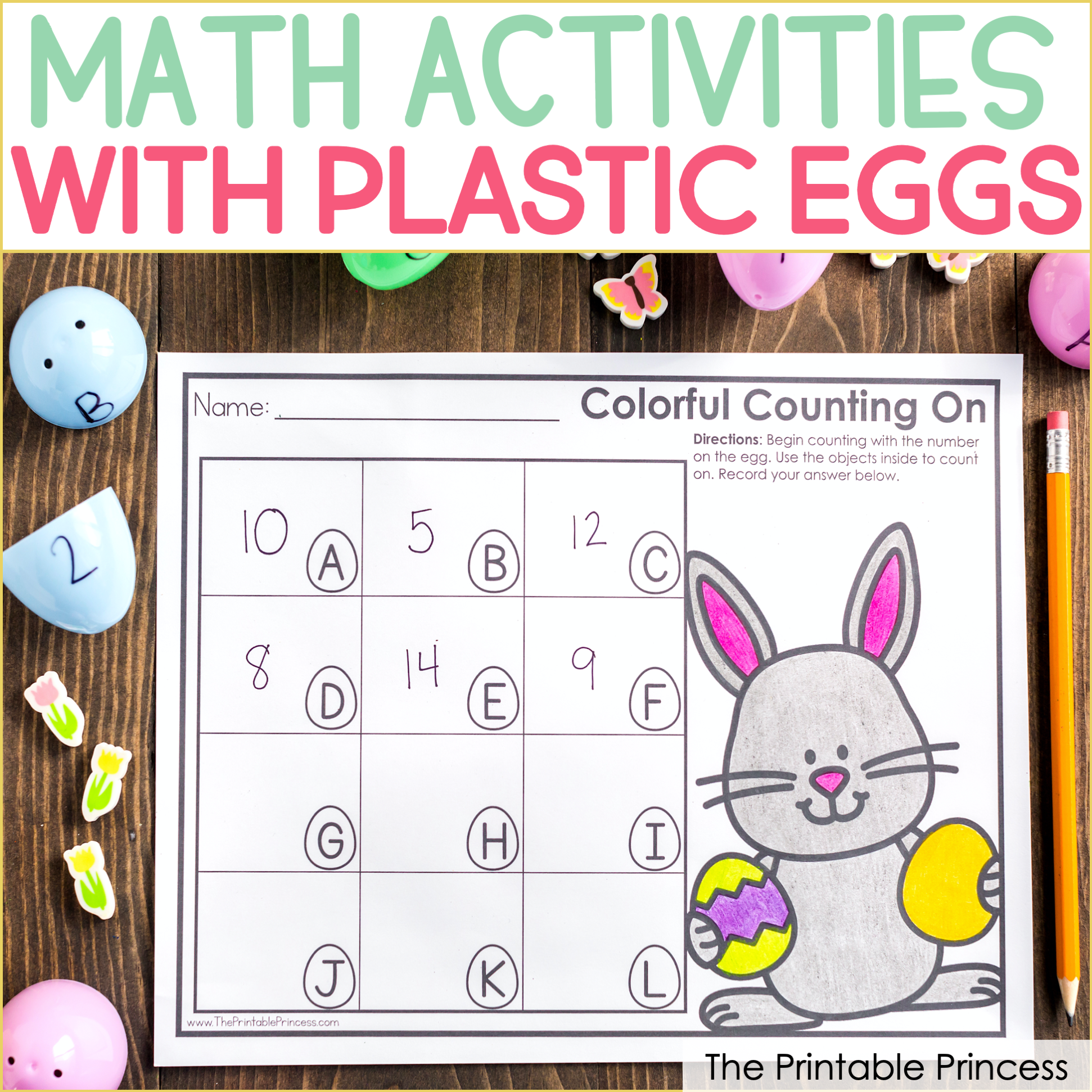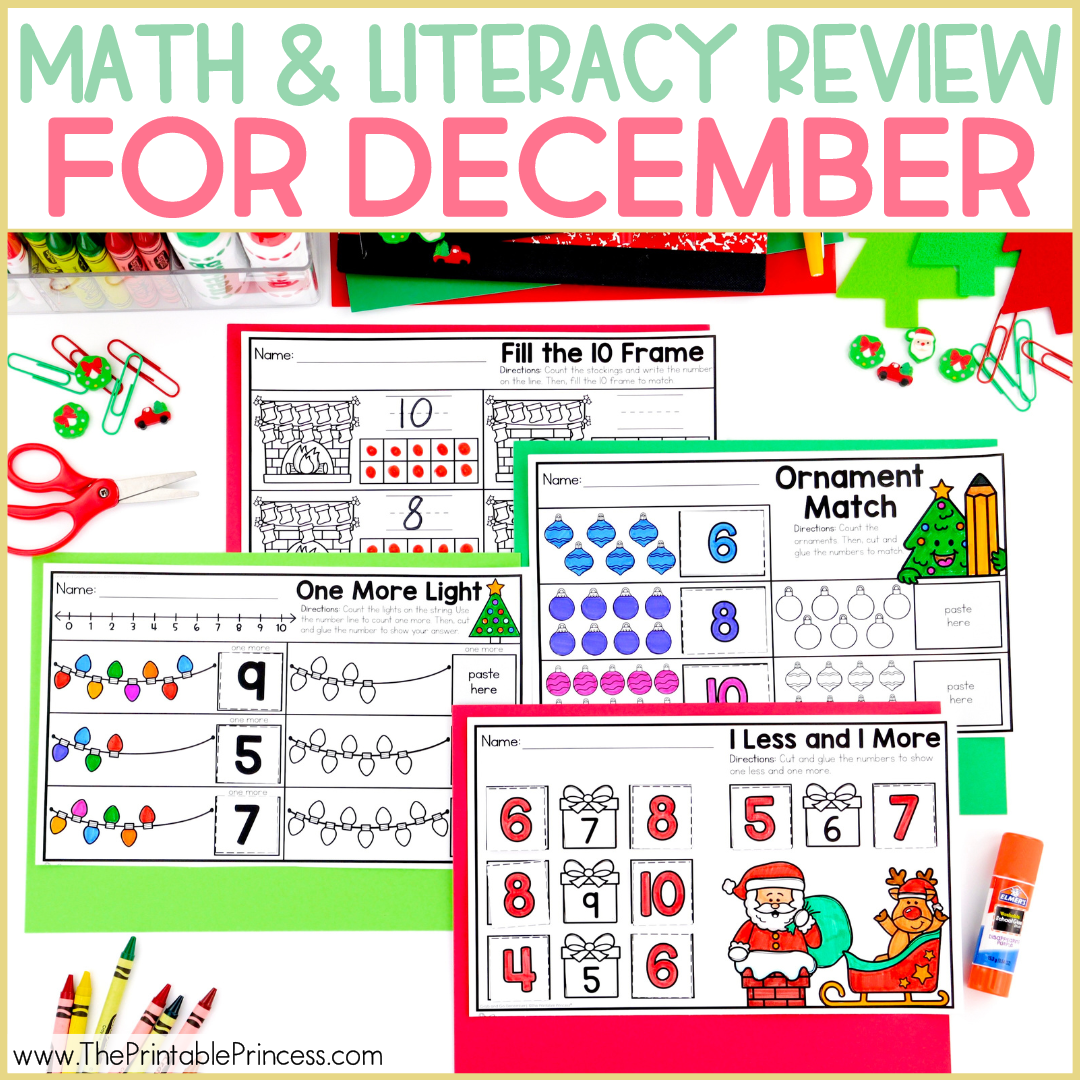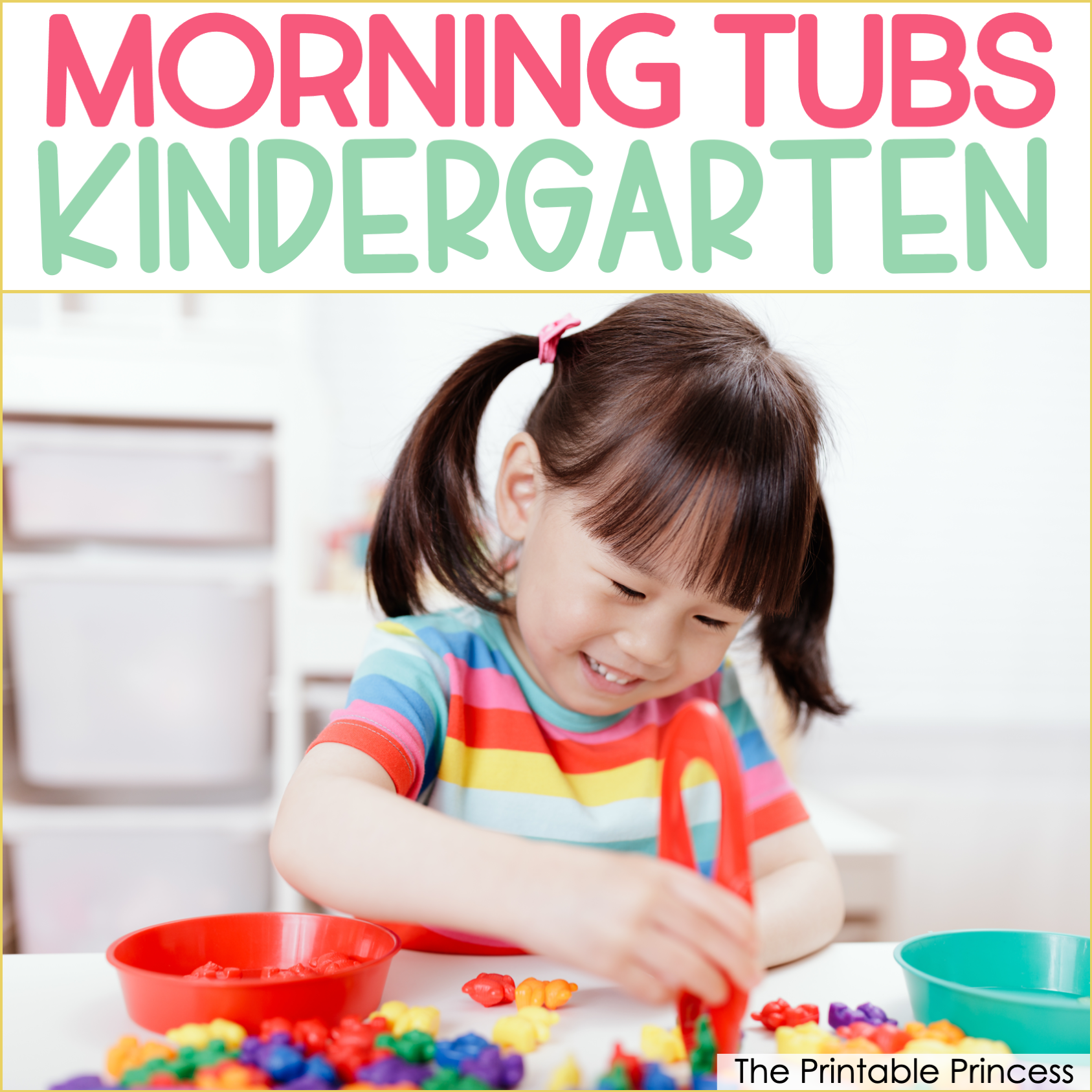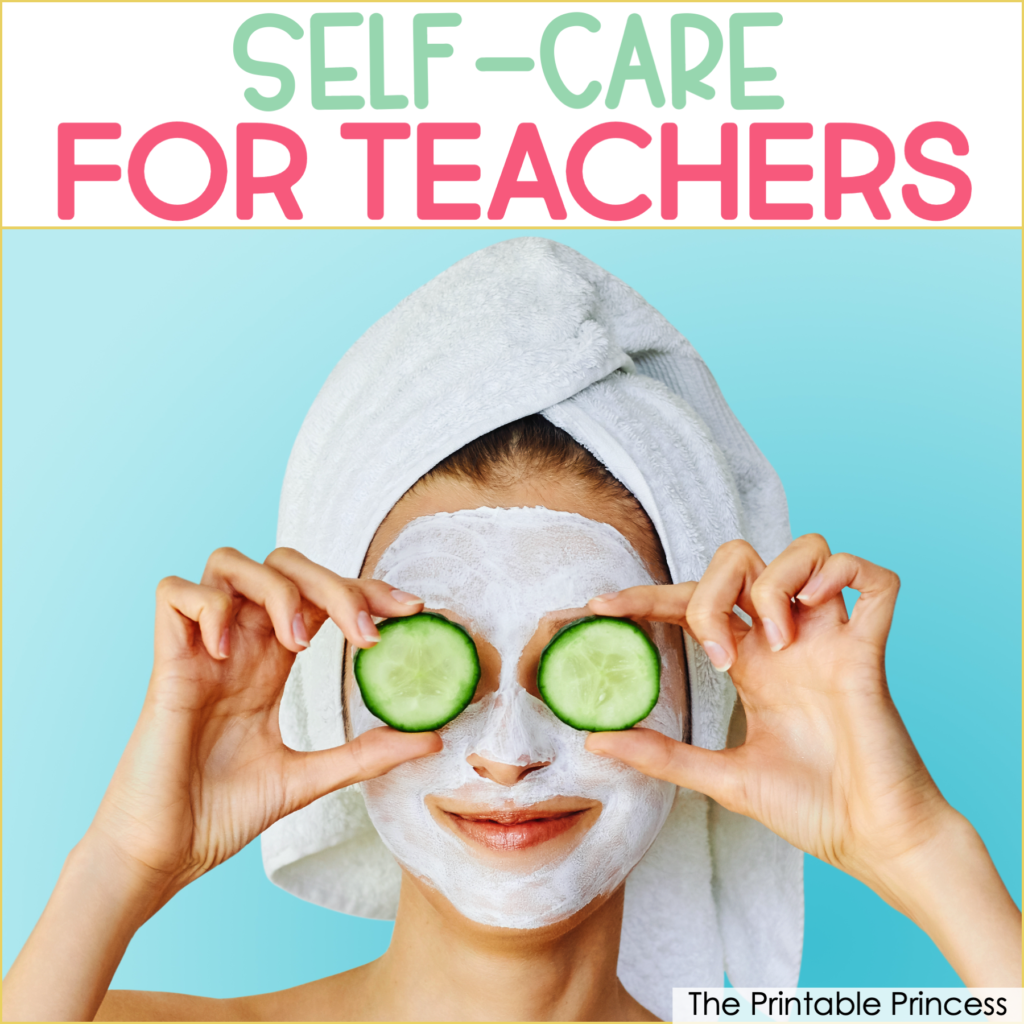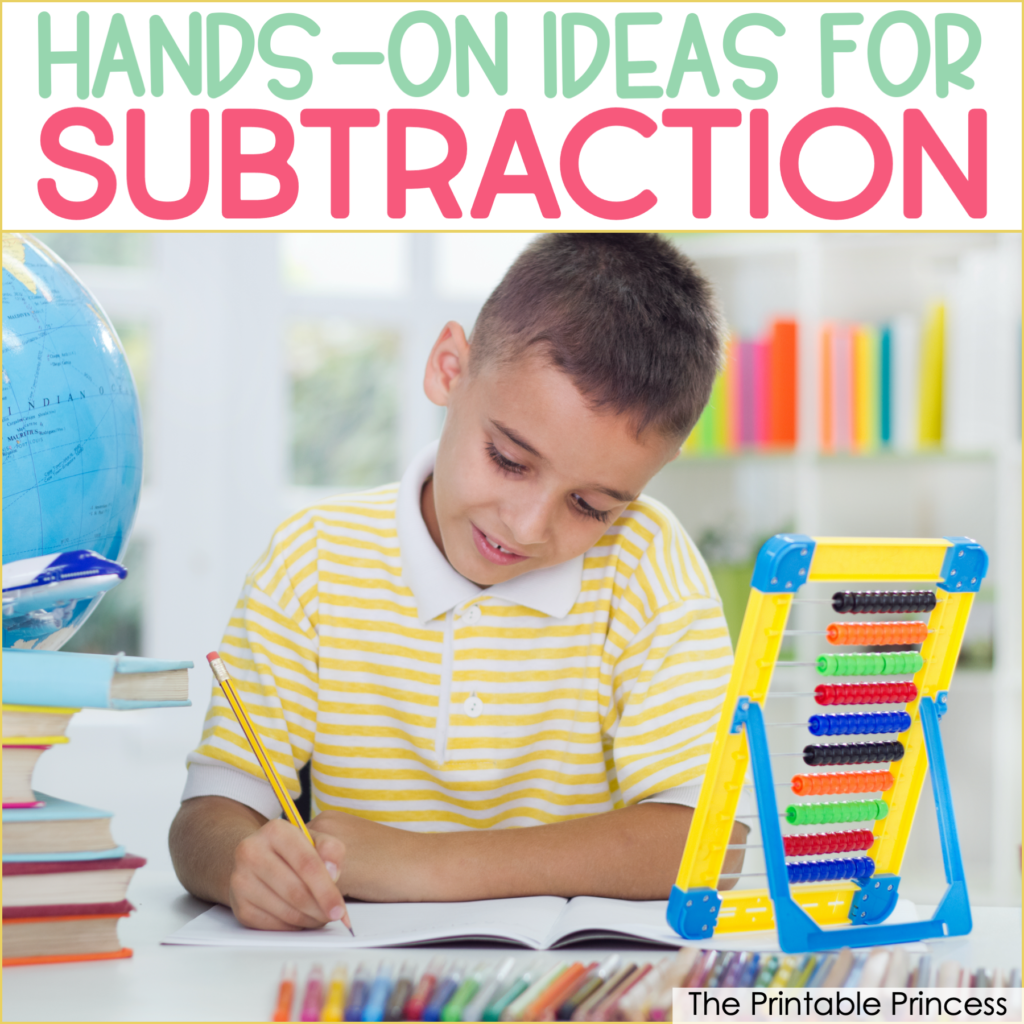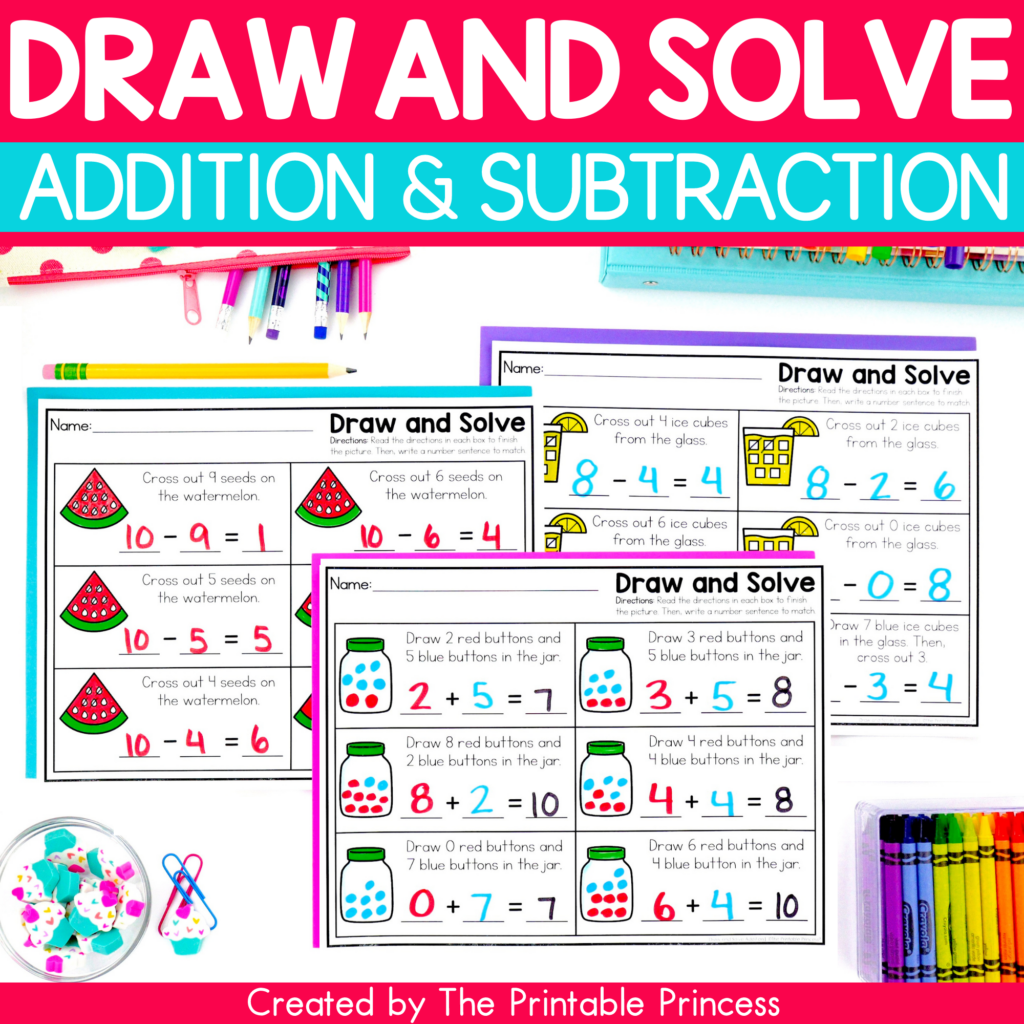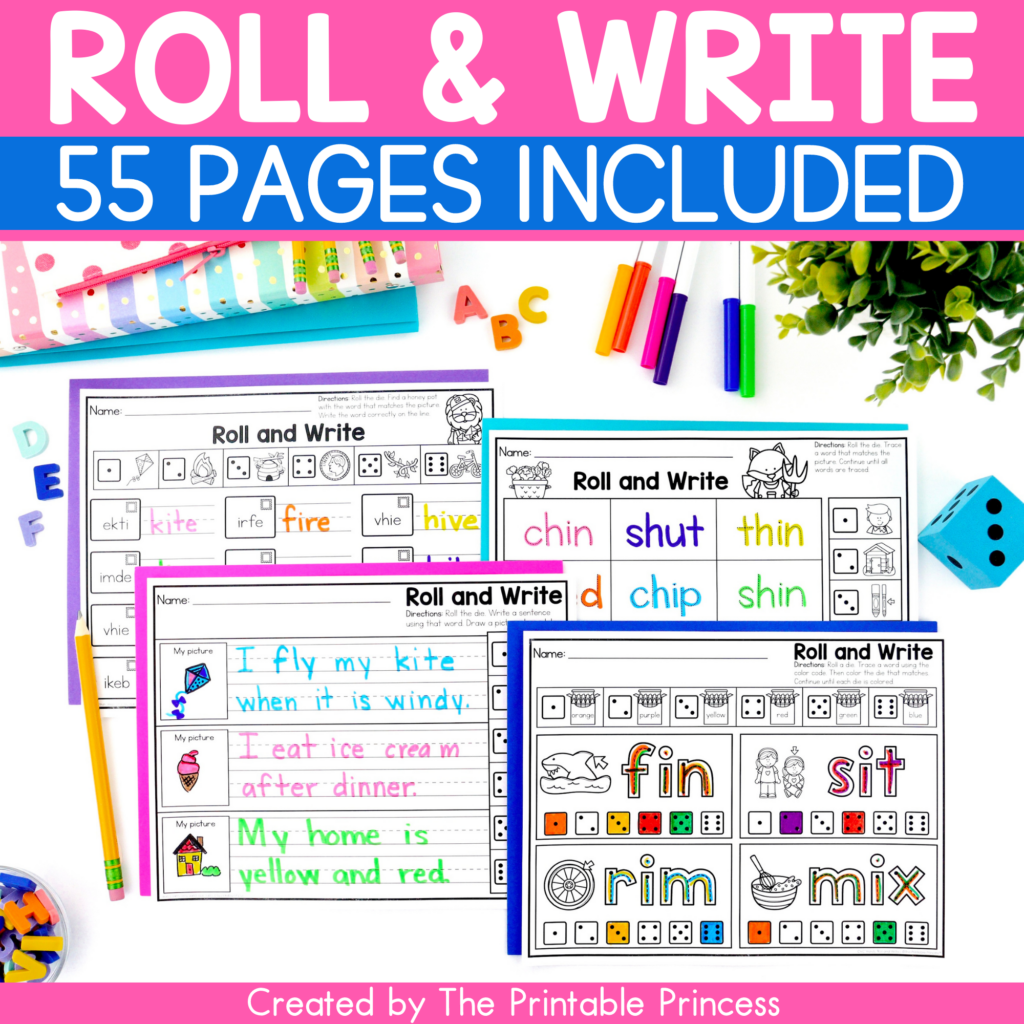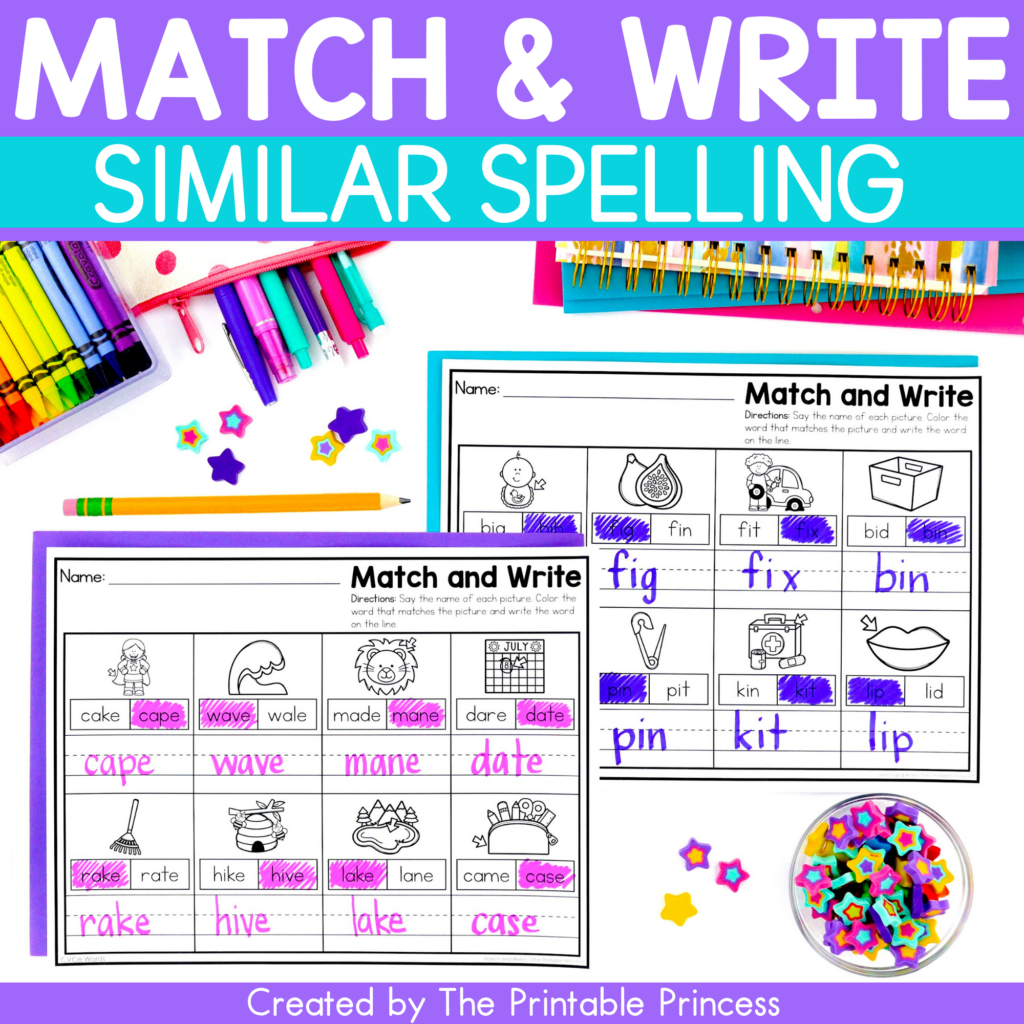9 Ways to Practice Making 5 and 10 in Kindergarten
Making 5 and 10 in kindergarten is an important math skill that prepares students for many other math skills, such as addition and subtraction. Make practice fun, engaging, and effective with these ways to make 5 and 10 activities for kindergarten.
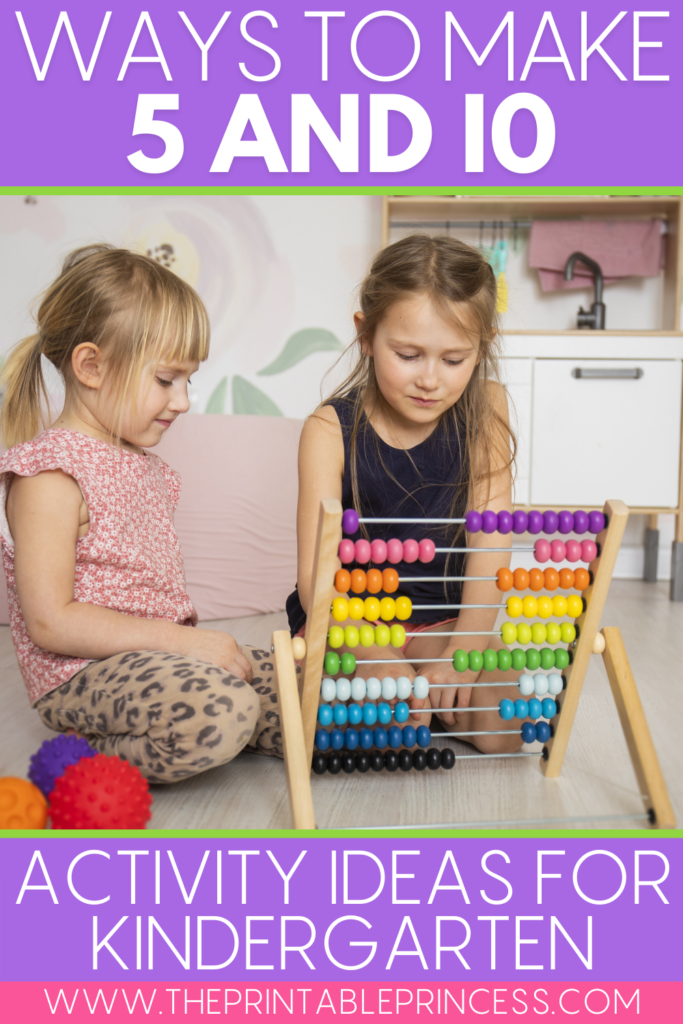
Ways to Make 5 and 10 Activities
Teaching students different ways to make 5 and 10 helps them learn how to compose and decompose numbers. This is a critical skill that students must learn before moving on to addition and subtraction.
This skill requires a lot of practice and exposure, which is why it's important to have a vast selection of ways to make 5 and 10 activities for your students to work with. Read on for 9 low-prep, effective activities for practicing making 5 and 10.
#1. Number Beads
For this activity, all you need are pipe cleaners and beads, such as those you find at the craft store. String 5 or 10 beads, depending on what number you're practicing, of the same color onto the pipe cleaner. Form the pipe cleaner into a circle.
Take a small piece of masking tape and write the number you're practicing on the tape. Use the tape to secure the pipe cleaner by taping the seam. Students can then move the beads on each side of the tape to show different ways to make 5 and 10.
#2. Roll a Number Pair
This Roll a Number Pair activity is a great ways to make 5 and 10 activity for kindergarten. Determine what number you're working on, either 5 or 10. Write different number pairs on a dry erase cube.
Students will take turns rolling the cube, reading the number pair, and telling if it makes 5 or 10. If you wanted to add an extra challenge, you could have students model the number pair using manipulatives and a ten-frame.
#3. Mini Eraser Ten-Frames
For this ways to make 5 and 10 activity, choose 2 colors or patterns of mini erasers. You can also use plastic math cubes or counting bears. Have students arrange the 2 colors in a 5 or 10 frame to show various ways to make 5 or 10.
Then, have them write the number pair on a whiteboard to show their understanding. This is great practice for beginning addition skills.
You can also use number pair cards and have students draw a card and then model the number pair with their mini erasers or manipulatives.
#4. Race to Make 5 or 10
This math game is a simple, yet exciting way to practice making 5 and 10. Write number pairs to 5 and 10 on notecards. Pass out the cards so each student has one. Give them a few seconds to look at the card without showing it to anyone.
When you say “GO,” students will hold up their card and look around the room, racing to get in groups of “Makes 5” and “Makes 10.” Each student in the group will then read their number pair aloud. This is a great way to practice differentiating number pairs to 5 and 10.
#5. Number Tower Match
For this activity, supply individual students with 2 colors of plastic math cubes. If you're practicing making 5, give them 5 of each color. If you're practicing making 10, give them 10 of each color.
Write number pairs to 5 or 10 on notecards. Students will draw a card and model the number pair using their counters.
You can differentiate this activity by giving them number cards with pairs to 5, pairs to 10, or both pairs to 5 and 10.
#6. Sticky Note Number Pairs
To prepare this activity, draw a simple 5 or 10 frame on the whiteboard. Call out a number pair and have students take turns coming to the whiteboard and using 2 colors of sticky notes to model number pairs.
After they've modeled the number pair, have them write the number pair on the whiteboard, such as “3 and 2 make 5.” You can even use this as an opportunity to practice writing addition equations and have them write “3+2=5.”
You can also do this activity using a magnetic ten-frame set on the whiteboard. If you wanted to do this as a game at the carpet, you could make a giant ten-frame out of painter's tape and have students use 2 colors of party plates to model the number pairs.
#7. Shake and Spill
Shake and Spill is a fun, hands-on way to practice making 5 and 10. Supply students with 2-color counters and a plastic or styrofoam cup. Students will put the counters in the cup, place their hand over the top, and shake the cup.
Then they will spill the counters onto the table and sort the colors to show the number pair. They will write the number pair on a whiteboard and continue shaking and spilling.
There are several Shake and Spill activities you can do to practice showing number pairs to 5 and 10. Students can color in a 5 or 10 frame to show the number pair, use counters on a five or ten-frame mat, practice writing equations, etc.
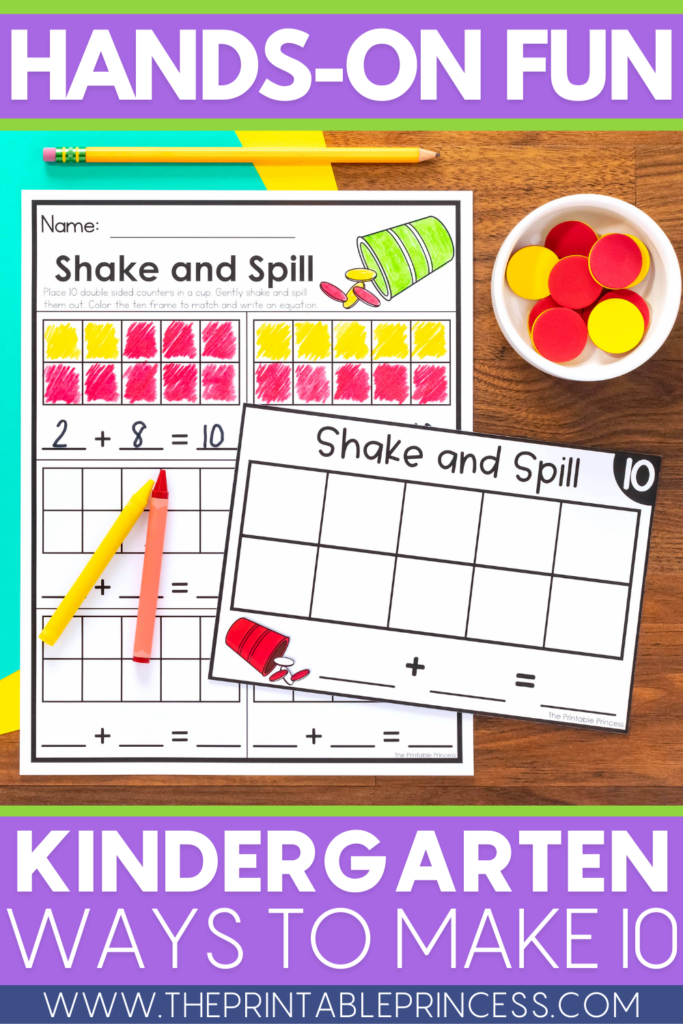
#8. Making 5 or 10 Rainbow
You can also practice ways to make 5 and 10 using a Making 5 or 10 Rainbow. You'll need a large piece of chart paper and rainbow colored markers. Begin by writing “Ways to Make 5” or “Ways to Make 10” on the top of the paper.
Use the first color of the rainbow, red, to draw a large rainbow arch. At one end of the arch, write the number 0 and at the other end, write the number 5. Use an orange marker to draw the next arch. Write the numbers 1 and 4 at the ends. Then, use a yellow marker to draw another arch and write the numbers 2 and 3 at the ends.
On the left side of the rainbow, you have the numbers 0, 1, and 2. On the right side of the rainbow, you have the numbers 3, 4, and 5. Under the left side, read the number pairs left to right, across the arch, and write the addition equations. For example, on the left side, you'll write 0+5=5, 1+4=5, and 2+3=5.
Under the right side, read the number pairs right to left, across the arch, and write the addition equations. For example, on the right side, you'll write 5+0=5, 4+1=5, and 3+2=5.
You can add more arches and equations to show ways to make 10.
#9. Magnetic Number Pairs
Mix up the making 5 and 10 practice by using magnetic numbers and counters to model and show number pairs. You can use these in various ways to differentiate the learning.
Students can draw a number pair notecard and model the number pair using the magnetic counters. They can then build the equation using the magnetic numbers.
They can also model their own number pairs to 5 or 10 using the counters and then build the matching equation.
Students could even work in partners for this activity. Each partner would model a number pair using counters. They would switch places, look at the number pair, and build the equation.
I hope these ways to make 5 and 10 activities for kindergarten have given you new ideas to practice this important skill with your students.
If you'd like to see more activities for making 5 and 10, including the ones shown in this blog post, check out my Ways to Make 5 and 10 Bundle.

